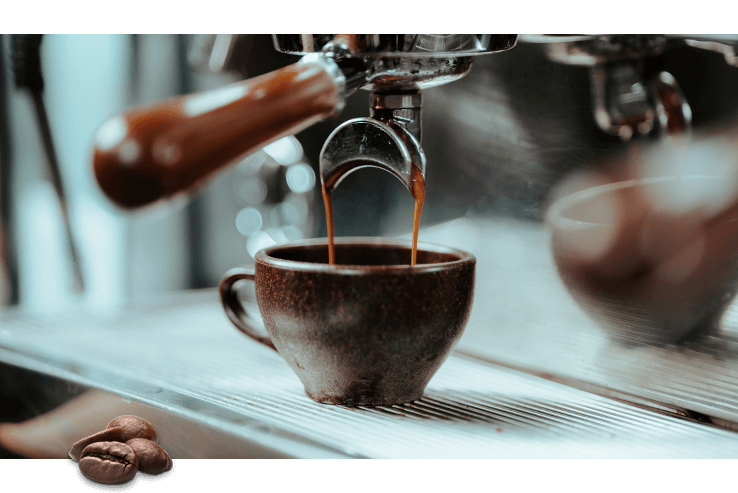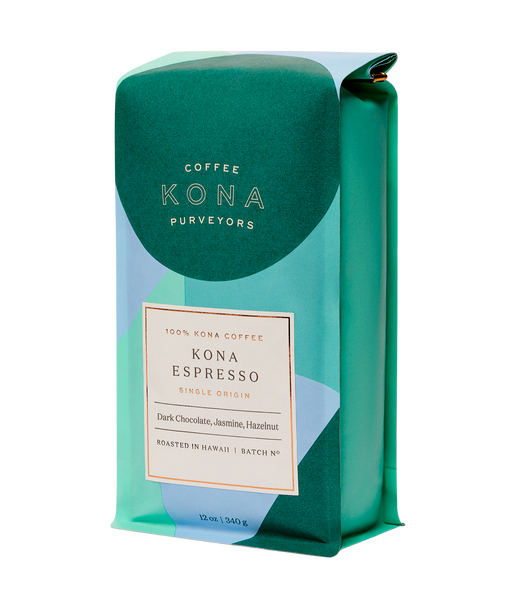How to Store SOE Single Origin Espresso for Optimal Freshness
Wiki Article
Understanding Coffee Beans: the Trip From Espresso to Blended Coffee Beans

The Beginnings of Coffee: A Global Point Of View
While you could think about coffee as a contemporary staple, its beginnings map back centuries, linking with cultures throughout the world. The tale begins in Ethiopia, where legend states a goat herder named Kaldi uncovered the stimulating results of coffee beans after noticing his goats frolicking energetically after eating them. This sparked rate of interest, leading to coffee's spread to Arab investors that treasured the made beverage. By the 15th century, it reached Persia, Egypt, and Turkey, where coffeehouses became social centers for discussion and society.As profession routes broadened, coffee made its method to Europe in the 17th century, rapidly getting appeal. Each society included its unique spin to coffee prep work, improving its history.
Cultivation and Harvesting of Espresso Beans
As coffee's trip developed, the emphasis shifted to the growing and harvesting of particular bean selections, specifically those utilized for coffee. You'll find that espresso beans commonly originate from Arabica or Robusta plants, each offering unique flavors. The ideal expanding problems include high elevations and abundant, well-drained soil, which improve the beans' top quality.During the harvest, selecting methods differ. In some areas, employees hand-pick ripe cherries, making certain just the ideal fruit goes to handling. In other locations, mechanical harvesters are utilized, especially on bigger ranches. When the cherries get to peak ripeness for optimum flavor., timing is crucial; you desire to harvest.
When harvested, the beans are planned for handling, which is essential in identifying their last preference. Understanding the cultivation and harvesting processes provides you understanding right into what enters into your preferred coffee, enhancing your admiration for each and every mug.
Handling Techniques: From Cherry to Bean
Currently that you have actually found out about harvesting coffee beans, allow's check out exactly how those cherries transform into the coffee beans you enjoy. You'll see how various harvesting strategies effect taste, complied with by the essential steps of fermentation and drying out. We'll damage down the milling and grading procedure that establishes your coffee's high quality.Collecting Methods Described
When it concerns coffee, recognizing harvesting techniques is essential, considering that they directly impact the flavor and quality of the beans you enjoy. There are two key techniques: careful picking and strip selecting. Discerning selecting involves hand-picking just ripe cherries, ensuring you obtain the ideal high quality beans. This approach typically brings about a richer taste account, though it's more labor-intensive. On the other hand, strip selecting ways collecting all cherries at when, regardless of ripeness. While it's quicker and cheaper, this can cause a mix of flavors, affecting the last product. Inevitably, the option of harvesting strategy can substantially influence your coffee experience, so it's worth understanding how those beans made it to your mug.Fermentation and Drying Out
After harvesting, the next steps in handling coffee beans play a considerable function in shaping their flavor. You'll locate that fermentation is essential, as it aids damage down the mucilage surrounding the beans, boosting their taste profile. Relying on the approach, this process can last from a couple of hours to several days, with varying results based upon temperature level and moisture.Sun-drying permits the beans to soak up tastes from the atmosphere, while mechanical drying out guarantees constant wetness levels no matter of climate. Appropriate drying out is important to stop mold and mildew and protect the beans' top quality, eventually influencing your cup of coffee.
Milling and Grading Process
As fermentation and drying out established the phase for taste growth, the milling and grading procedure assurances that only the very best coffee beans make it to your mug. This phase involves removing the external layers of the coffee cherry, consisting of the parchment and husk. After milling, the beans are sorted by size and weight, ensuring a consistent high quality. You'll discover that grading assists determine defects and classify beans, which impacts taste and fragrance. High-quality beans receive a greater grade, resulting in a richer coffee experience. As soon as rated, the beans are prepared for packaging and delivery, protecting their special features. This careful process is crucial for providing the outstanding preference you appreciate in every sip of your favored mixture.Toasting Methods: Opening Flavor Possible
When you roast coffee beans, the technique you pick can substantially affect the taste account. Understanding the relationship between time, temperature level, and roasting strategies is key to disclosing the potential of your mixture. Let's check out exactly how these elements come with each other to create the best cup.Roasting Approaches Described
While you may assume that all coffee toasting techniques produce the exact same results, the reality is that each method reveals one-of-a-kind flavor possibilities in the beans. You can pick in between techniques like drum roasting, air roasting, or even conventional pan roasting. Drum toasting uses a revolving drum to evenly disperse warm, improving caramelization and producing a well balanced taste. Air roasting, on the various other hand, flows hot air around the beans, promoting a lighter roast with noticable acidity. Frying pan toasting enables for hands-on control yet requires continuous interest to prevent burning. Each method has its nuances, so trying out different techniques can help you discover the ideal roast that lines up with your taste choices. Appreciate the trip of locating your perfect cup!
Effect On Taste Profile
Various toasting approaches not only influence the process yet likewise significantly influence the flavor profile of the coffee beans. Dark roasts, on the various other hand, bring out bold, great smoky tastes, in some cases covering up the bean's unique attributes. Understanding these subtleties aids you value the creativity behind your cup of coffee, improving your total experience with every sip.Time and Temperature Level Elements
To release the full flavor potential of coffee beans, both time and temperature during the roasting process play considerable functions. When roasting, you'll locate that higher temperatures can swiftly establish tastes, yet if you hurry it, you could wind up with scorched notes. Conversely, lower temperatures permit an extra steady flavor development, showcasing the beans' unique qualities.
Timing is equally as important; prolonging the roast also long can bring about a loss of acidity and brightness, while too short a roast may leave the beans underdeveloped. Discovering that wonderful spot requires technique and trial and error. By readjusting these factors, you can disclose the abundant, intricate tastes hidden within each bean, creating a really impressive coffee experience.
The Art of Mixing: Crafting Special Coffee Profiles

Beginning by selecting a base coffee that gives a strong foundation. A brilliant Ethiopian bean can bring fruitiness, while a rich Brazilian coffee includes body.
As you mix, remember that each mix narrates. You're not simply making coffee; you're creating an experience. So, take your time, preference frequently, and appreciate the journey of finding your signature mix.
Brewing Methods: Exactly How Prep Work Impacts Taste
Mixing coffee opens up a domain name of taste opportunities, however exactly how you brew that blend can considerably affect your final mug. On the various other hand, a pour-over highlights the coffee's clarity and illumination, best for showcasing fragile notes.Espresso, with its high stress, produces a concentrated shot that emphasizes sweet taste and crema. If you favor a lighter mixture, take into consideration a chilly brew method; it produces a smooth, much less acidic taste.
Ultimately, trial and error is crucial. Adjusting variables like water temperature, grind dimension, and brew time can change your coffee's account. Welcome the art of brewing to discover the tastes hidden in your coffee blends. The right method can boost your experience to new heights.
The Future of Coffee: Sustainability and Development
As the coffee market progresses, sustainability and advancement are ending up being essential for attending to environmental challenges and conference consumer needs. You'll notice that even more coffee firms are taking on eco-friendly methods, from sourcing beans morally to executing lasting farming strategies. These changes not just assist the earth however additionally boost the high quality of the coffee you take pleasure in.You might see advancements like biodegradable packaging and water-saving developing methods that decrease waste. Advanced technology, such as blockchain, is likewise coming to be preferred, ensuring transparency in the supply chain, which allows you to trace your coffee back to its origins.
On top of that, purchasing neighborhood neighborhoods and sustaining farmers through fair trade initiatives cultivates a more sustainable coffee ecosystem. As you drink your following mug, keep in mind that your choices can contribute to a brighter future for coffee. By selecting lasting brand names, you're not just appreciating a drink; you're making a favorable effect on the globe.
Often Asked Concerns
What Is the Difference Between Arabica and Robusta Beans?
Arabica beans are smoother, sweeter, and have a higher acidity, while robusta beans are stronger, more bitter, and contain even more high levels of caffeine. You'll see these distinctions in flavor and aroma when brewing your coffee.Just How Does Elevation Affect Coffee Bean Taste?
Elevation effects coffee bean flavor significantly. Higher altitudes generate beans with brighter level of acidity and complicated flavors, while lower altitudes commonly yield beans that are larger and less nuanced. You'll discover these differences in your cup!What Are the Health And Wellness Conveniences of Drinking Coffee?
Consuming coffee SOE can boost your power, enhance mental emphasis, and also improve physical efficiency. It's abundant in antioxidants, might decrease the risk of particular diseases, and can promote a healthier metabolism when eaten in moderation.Can Coffee Beans Be Reused for Developing?
Yes, you can reuse coffee beans for developing, but the taste could be weaker. If you appreciate exploring, attempt reusing them in different methods, like cold brews or contributing to shakes for an additional kick.Just how Should I Store Coffee Beans for Freshness?
To maintain your coffee beans fresh, keep them in an impermeable container in a cool, dark location. Avoid subjecting them to heat, light, or wetness, as these variables can rapidly deteriorate their taste and aroma.Recognizing Coffee Beans: the Journey From Espresso to Blended Coffee Beans.
Currently that you've found out about gathering coffee beans, let's explore exactly how those cherries change right into the coffee beans you enjoy.When you roast coffee beans, the method you select can substantially impact the taste account - Single Origin Espresso.While you could assume that all coffee roasting methods yield the very same outcomes, the truth is that each technique reveals one-of-a-kind taste possibilities in the beans.Various toasting techniques not just influence the process however also significantly influence the taste account of the coffee beans
Report this wiki page